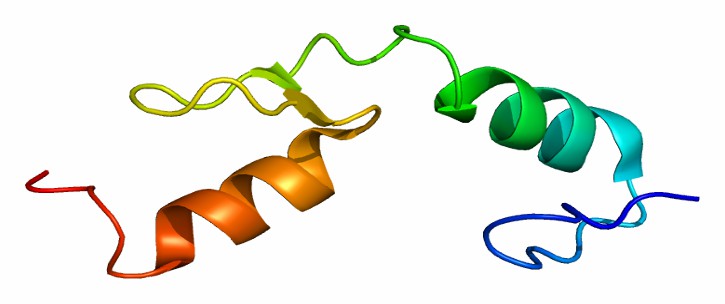HIVEP1 and Associated Diseases
Gene therapy has been regarded as an attractive topic for the prevention or treatment of acquired and genetic diseases. With the advanced gene therapy platform, Creative Biolabs is a world-class biotechnology company and we provide optimal and feasible strategies for gene therapy to improve people's quality of life.
Overview of HIVEP1
In humans, human immunodeficiency virus type I enhancer-binding protein 1 (HIVEP1, also known as zinc finger protein 40 or HIVEP zinc finger 1) is a protein encoded by the HIVEP1 gene located on chromosome 6p24.1. HIVEP1 is a transcriptional factor belonging to the ZAS family and contains a ZAS domain consisting of an acidic-rich region, a pair of C2H2 zinc fingers, and a sequence enriched with threonine and serine. The HIVEP1 protein can bind to the promoter or enhancer of several viruses like HIV and SV40 via specific DNA sequences such as the kappa-B motif (GGGACTTTCC). HIVEP1 can also bind the related enhancer, found in cellular promoters like the class I MHC, to function as a transfection factor to regulate cellular gene expression.
 Fig.1 The structure of HIVEP1. (Wikipedia)
Fig.1 The structure of HIVEP1. (Wikipedia)
HIVEP1 in Disease
HIVEP1 is a protein-coding gene and takes part in the progression of various diseases such as venous thrombosis and chronic lymphocytic leukemia.
- Venous thrombosis
The genetic variant of HIVEP1 is a candidate for the venous thrombosis (VT) risk. According to the analysis of the genome-wide association scan performed between VT patients and healthy controls, the HIVEP1 locus on chromosome 6p24.1 is identified as a susceptibility locus for VT. The HIVEP1 rs169713C allele is related to the high risks of VT occurring. Meanwhile, the expression of HIVEP1 is also found in human carotid atheroma plaques which play a key role in the inflammation of atherosclerosis. Given the proof that HIVEP1 can also bind the specific sequence found in the enhancer or promoter of the class I MHC and interferon-β genes which are associated with an inflammatory signaling pathway, HIVEP1 is a locus involved in VT susceptibility.
- Chronic lymphocytic leukemia
HIVEP1 is associated with the progression of chronic lymphocytic leukemia (CLL). CLL is a heterogeneous disease and lacks the methods to accurately predict the risk of disease progression in individual patients. According to the mature cDNA array technique used in various malignancies, gene expression in CLL can be studied. HIVEP1 is one of the differentially expressed genes and is upregulated in CLL patients compared with healthy controls, typically in the subgroup of CLL patients with 11q23 deletion. Besides, the structural chromosome aberrations like 11q23 deletion are associated with disease progression and poor survival in CLL patients. Thus, HIVEP1 is one of the molecular prognostic markers for CLL.
Creative Biolabs has been devoted to the research of gene therapy. We have years of experience in providing gene therapy services, with optimized platforms and well-trained teams available for your convenience. Please feel free to contact us for more about your HIVEP1 project.
Reference
- From Wikipedia: Emw, CC BY-SA 3.0, https://commons.wikimedia.org/wiki/File:Protein_HIVEP1_PDB_1bbo.png.
